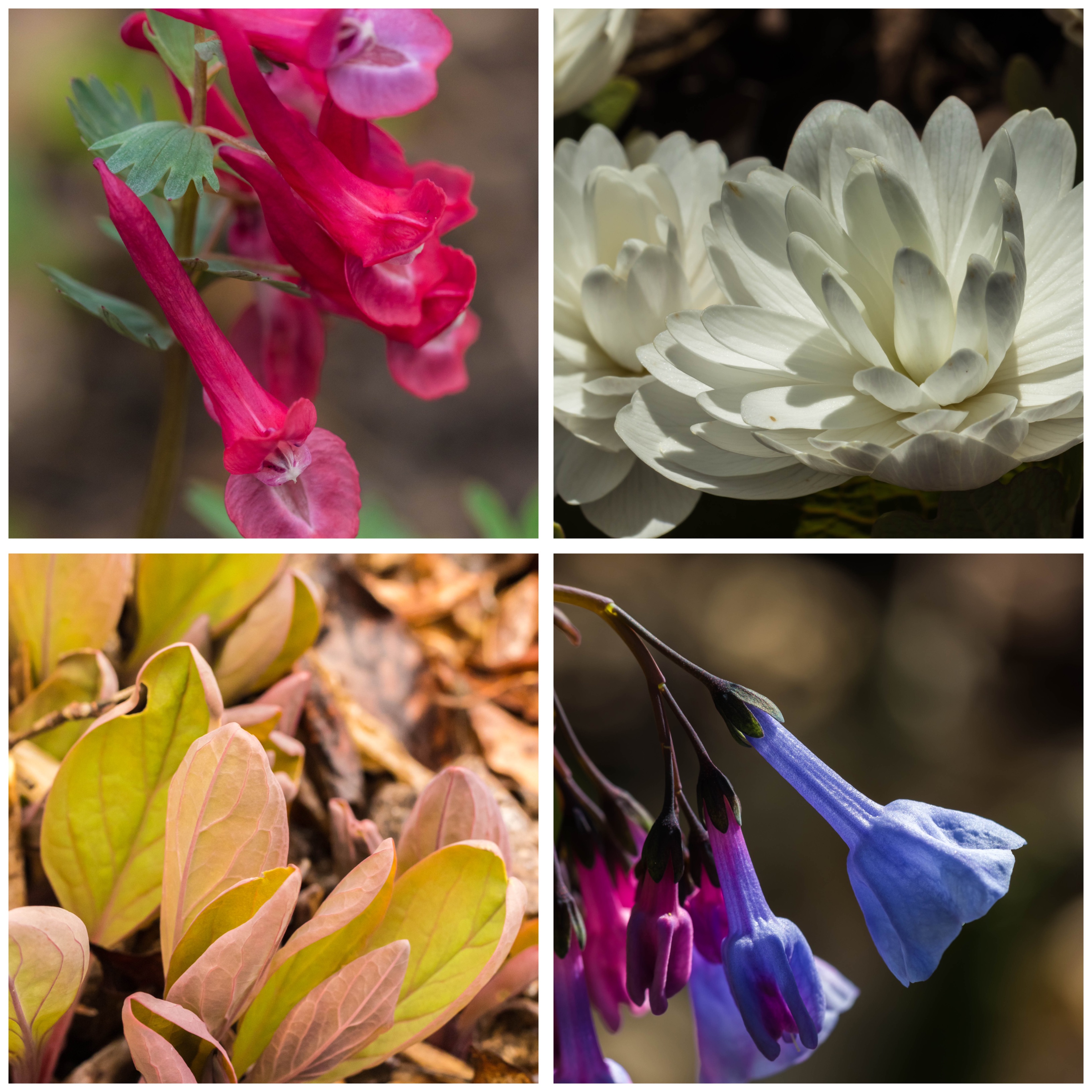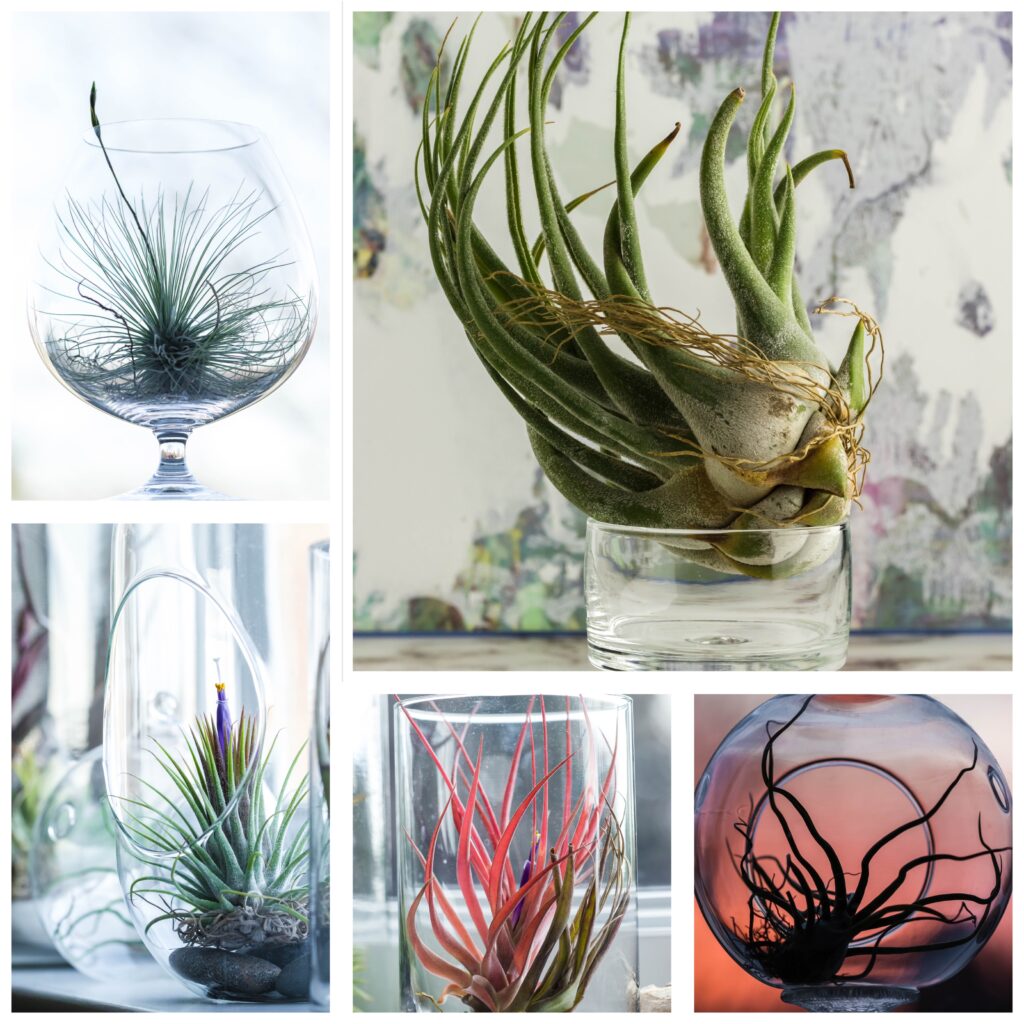By Sue Healey, Tillsonburg Horticultural Society
This spring has been a long, and drawn-out one in my corner of the world. The green haze over the trees is only now knitting together to obscure the branches, puddling the streets with their lime or bronze catkins. But spring is fleeting in south-western Ontario and gone in a blink. We’re as likely to have sunburns by mid May as we are frost. But a slow start need not be a bare one.There are blooms to be had in the very early days if you know where to look. Before the heady rush begins, in the gentle, quiet time of early spring, there is a group of plants that offer us the first signs of the season to come.
Ephemerals, as they are informally known, are perennial plants that emerge, bloom and then quietly disappear, all in the space of a few weeks. This loose band of plants, many of them native to our own woodlands, bring some of the first colour to the year despite rain and freezing temperatures and even the occasional snow shower.
My own garden holds just a few examples of these vanishing beauties but there is one for almost every site and each is worthy of searching out. Their early appearance satisfies my (some would say, impatient) poking about and provides a welcome distraction from the monotonous browns and greys of the early garden.
The first to bloom, in the dappled shade at the edge of a star Magnolia, is our native bloodroot, properly called Sanguinaria canadensis. Often nosing it’s way out of the ground by mid April; the lobed leaves clasp the flower buds as they make their way to the light, gently unfurling as the buds open into chalk white, daisy like flowers. There are single and double types available, both offering handsome leaves that expand after flowers fade. Easily adapted to the garden in consistently moist soil, this rhizomatous perennial goes completely dormant by mid summer, so marking is recommended.
Just as the bloodroot finishes, Grecian windflowers (Anemone blanda) begin. Delicately dissected leaves first appear in mid April followed by daisy like flowers in shades of white, pink and purple. Flowers open with the sun and close each night,preserving their beauty and making this one of the longest lasting ephemerals in the garden. Leaves fade a few weeks after the flowers do and disappear by early summer. The small corms, dark and leathery, are planted in late summer or early fall insemi-shade with moist, well-drained soil, rich in humus. Most of the shrubs in the garden have their attendant spring bulbs; tulips, daffodils and windflowers, with their diminutive stature, are the carpet beneath them. Here, they are undisturbed as they form gentle drifts through seedlings and corm division. Corms are readily available in autumn through bulb catalogues or garden centres.
Although our native trout lily (Erythronium americanum) often lasts only a few days, it is well worth adding to your woodland garden. This member of the lily family is native to eastern North America, prefers dappled shade and moist, rich soil. Trout lilies are best in drifts, along stream banks and ditches where their nodding flowers can be best appreciated. Unlike most lilies, erythronium has handsome, strap-shaped leaves often mottled in bronze or cream. Various colours are available from the yellowand bronze trumpets of Erythronium americanum to white (E. albidum) and shades of lilac (E. dens anis). Look for the hybridized E. “Pagoda” for larger, golden yellow flowers.
One of the earliest and brightly coloured of the ephemerals is spring blooming Corydalis. I had the pleasure of catching this dragon-mouthed beauty in mid April as it swathed over a raised bed, under the bare limbs of Japanese maple. Waves of pink and purple covered the ground, seedlings and divisions, obviously happy under the chilly but bright sky. Corydalis cava (also sold as E. bulbosa) is a tuberous, hand tall member of the very largeand diverse Corydalis family. Forming mounds of lacy, pale green leaves much like those of bleeding heart (Dicentra), thickly packed racemes of blossoms appear shortly afterwardsand last a week or more. Plants can self seed if given ideal conditions: sun or light shade and moist but well drained, slightly acidic soil. Seedlings are best moved just after floweringand planted quickly to avoid tubers drying out. Well established patches offer vibrant drifts of colour early in the season,disappearring by the onset of summer. Other species of Corydalis offer later bloom times and different colours; C. lutea blooms throughout the summer in golden yellow and C. flexuosa in blue over the summer.
The last of my ephemerals to bloom is Mertensiapulmonarioides, more easily called Virginia bluebells. A mid sized wildflower native to the eastern half of North America, Mertensia will send up single stems clothed in spooned shaped leaves in mid to late April. The leaves, flushed in warm, rosy hues are lovely as they emerge, ripening to a fresh, bright green with the topmost leaves still edged in rose. By early May and just as the dogwoods begin, each nodding stem is tipped in a cluster of pink buds that open and age to clear, turquoise blue trumpets. Lasting (in good weather) for a week, this member of the Borage family does best in partial shade with humus rich soil. Long lived and pest free, propagation is by division after the plant goes dormant in early summer or by seed. Virginia bluebells are a wonderful way to add some blue to the early spring season.
Your local Horticultural Society is a fantastic resource for early spring blooms, both in knowledge and plants. This year’s 17th Annual Garden Auction & Plant Sale will be held on Tuesday, May 20, 2025, and all are welcome. Every year brings new and exciting plant and garden material. This year’s patriotic red & white Colour of the Year is sure to bring in some unique items. Doors open at 5:00pm, Tillsonburg Community Centre, Lions Auditorium
📷 Sue H












